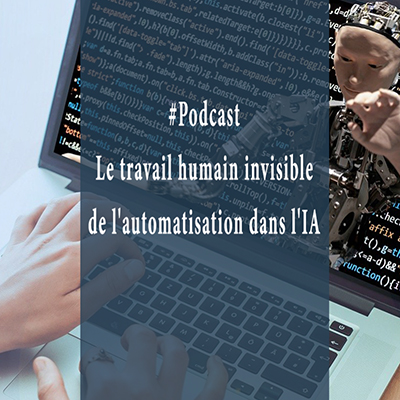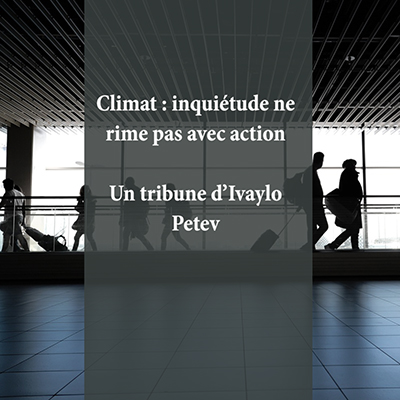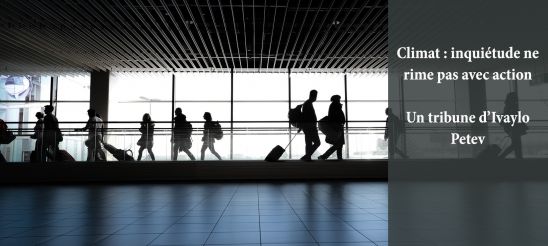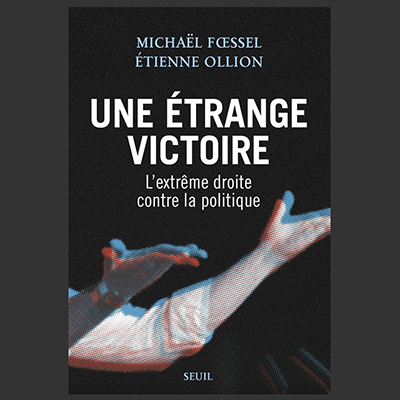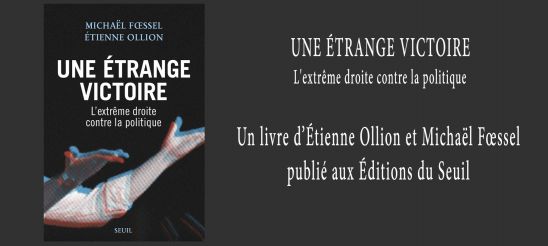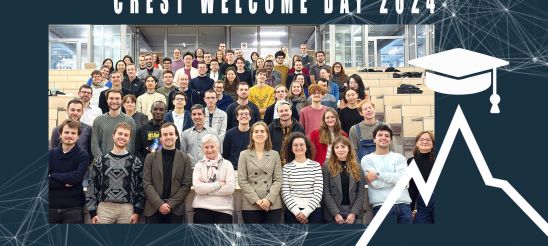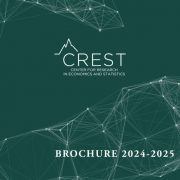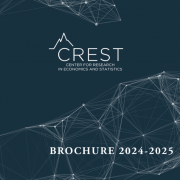Une interview de Paola Tubaro pour le journal suisse Le Temps
16 décembre 2024
Le travail humain invisible de l’automatisation dans l’IA
Une interview de Paola Tubaro pour le journal suisse Le Temps
16 décembre 2024
Climat : inquiétude ne rime pas avec action
Une tribune d’Ivaylo Petev pour le journal Les Echos.
27 novembre 2024
Climat : inquiétude ne rime pas avec action
Une tribune d’Ivaylo Petev pour le journal Les Echos.
27 novembre 2024
Essai : Une étrange victoire, l’extrême droite contre la politique par Michaël Foessel et Etienne Ollion
Le 18 octobre 2024, Michaël Foessel, philosophe, professeur à l’Ecole polytechnique ainsi que Etienne Ollion, directeur de recherche en sociologie (CNRS) au CREST publient un essai Une étrange victoire, l’extrême droite contre la politique aux éditions Seuil.
Les auteurs
Michaël Foessel, agrégé de philosophie, est actuellement directeur du département humanités et sciences sociales à l’École polytechnique. Ses recherches s’articulent principalement autour des questions de démocratie, de modernité, de sécularisation et des affects politiques, explorant notamment des notions comme la peur, le ressentiment et l’espoir. Il est également reconnu pour ses réflexions sur l’articulation entre l’intime et le politique, et la manière dont la vie privée s’entrelace avec l’espace public.
Étienne Ollion est membre du CREST et directeur de recherche en sociologie au CNRS. Ses travaux récents se concentrent sur deux axes principaux : d’une part, la politique et le pouvoir, et d’autre part, les méthodes computationnelles, souvent en les combinant dans une approche innovante.
L'ouvrage

Dans Une étrange victoire, l’extrême droite contre la politique, Michaël Foessel et Étienne Ollion analysent les transformations du paysage politique contemporain, en particulier la montée de l’extrême droite. Le livre se penche sur les évolutions du Rassemblement National (RN) en France et sur la manière dont ce parti a pu se rapprocher des normes républicaines tout en conservant certains de ses thèmes traditionnels.
Les auteurs explorent les changements dans les repères politiques classiques, comme le clivage gauche-droite, et montrent comment ces transformations ont contribué à rendre l’extrême droite plus acceptable pour une partie de l’électorat. Le livre aborde également les effets de ces évolutions sur l’espace public et le débat politique.
Cet ouvrage invite à réfléchir aux mutations des cadres politiques et à la manière dont elles redéfinissent les contours de la démocratie contemporaine.
La presse en parle
Regards : https://regards.fr/il-ne-faut-pas-croire-que-le-rn-sest-dediabolise-tout-seul/
LCP : https://lcp.fr/programmes/ca-vous-regarde/elections-americaines-tous-les-coups-sont-permis-314875
France Culture : https://www.radiofrance.fr/franceculture/podcasts/questions-du-soir-l-idee/infrapolitique-selon-michael-foessel-et-etienne-ollion-3658990
Non fiction : https://www.nonfiction.fr/article-12192-entretien-avec-etienne-ollion-letrange-victoire-de-lextreme-droite.htm
France Culture : https://www.radiofrance.fr/franceculture/podcasts/les-matins/coptes-d-egypte-notion-d-apologie-du-terrorisme-michel-barnier-sous-la-menace-du-rn-4736092
Le Populaire du Centre : https://www.lepopulaire.fr/paris-75000/actualites/apres-la-censure-de-michel-barnier-le-rn-est-il-encore-au-centre-du-jeu-politique-ca-rebat-les-cartes-estime-etienne-ollion_14608116/
Essai : Une étrange victoire, l’extrême droite contre la politique par Michaël Foessel et Etienne Ollion
Le 18 octobre 2024, Michaël Foessel, philosophe, professeur à l’Ecole polytechnique ainsi que Etienne Ollion, directeur de recherche en sociologie (CNRS) au CREST publient un essai Une étrange victoire, l’extrême droite contre la politique aux éditions Seuil.
Les auteurs
Michaël Foessel, agrégé de philosophie, est actuellement directeur du département humanités et sciences sociales à l’École polytechnique. Ses recherches s’articulent principalement autour des questions de démocratie, de modernité, de sécularisation et des affects politiques, explorant notamment des notions comme la peur, le ressentiment et l’espoir. Il est également reconnu pour ses réflexions sur l’articulation entre l’intime et le politique, et la manière dont la vie privée s’entrelace avec l’espace public.
Étienne Ollion est membre du CREST et directeur de recherche en sociologie au CNRS. Ses travaux récents se concentrent sur deux axes principaux : d’une part, la politique et le pouvoir, et d’autre part, les méthodes computationnelles, souvent en les combinant dans une approche innovante.
L'ouvrage

Dans Une étrange victoire, l’extrême droite contre la politique, Michaël Foessel et Étienne Ollion analysent les transformations du paysage politique contemporain, en particulier la montée de l’extrême droite. Le livre se penche sur les évolutions du Rassemblement National (RN) en France et sur la manière dont ce parti a pu se rapprocher des normes républicaines tout en conservant certains de ses thèmes traditionnels.
Les auteurs explorent les changements dans les repères politiques classiques, comme le clivage gauche-droite, et montrent comment ces transformations ont contribué à rendre l’extrême droite plus acceptable pour une partie de l’électorat. Le livre aborde également les effets de ces évolutions sur l’espace public et le débat politique.
Cet ouvrage invite à réfléchir aux mutations des cadres politiques et à la manière dont elles redéfinissent les contours de la démocratie contemporaine.
La presse en parle
Regards : https://regards.fr/il-ne-faut-pas-croire-que-le-rn-sest-dediabolise-tout-seul/
LCP : https://lcp.fr/programmes/ca-vous-regarde/elections-americaines-tous-les-coups-sont-permis-314875
France Culture : https://www.radiofrance.fr/franceculture/podcasts/questions-du-soir-l-idee/infrapolitique-selon-michael-foessel-et-etienne-ollion-3658990
Non fiction : https://www.nonfiction.fr/article-12192-entretien-avec-etienne-ollion-letrange-victoire-de-lextreme-droite.htm
France Culture : https://www.radiofrance.fr/franceculture/podcasts/les-matins/coptes-d-egypte-notion-d-apologie-du-terrorisme-michel-barnier-sous-la-menace-du-rn-4736092
Le Populaire du Centre : https://www.lepopulaire.fr/paris-75000/actualites/apres-la-censure-de-michel-barnier-le-rn-est-il-encore-au-centre-du-jeu-politique-ca-rebat-les-cartes-estime-etienne-ollion_14608116/
Welcome Day at CREST – A Great Start to the New Academic Year
On October 10, 2024, CREST held its annual Welcome Day, an event dedicated to welcoming new members (research assistants, PhD students, postdoctoral fellows, and faculty members), offering them an introduction to the laboratory through presentations from the management team and thematic leaders.

This year, all CREST sites (CREST-ENSAE Paris, CREST-ENSAI, and CREST-Télécom Paris) gathered at the ENSAE Paris campus.
The presentations provided the new members with a comprehensive understanding of CREST’s institutional environment, particularly its affiliations with the Institut Polytechnique de Paris and the University of Rennes. Each newcomer also had the opportunity to introduce themselves and their research project, fostering exchanges with both new and existing members of CREST.
The thematic leaders highlighted well-being initiatives at CREST, as well as the structure of the doctoral program at IP Paris. The event also allowed the administrative team to outline their roles and share useful recommendations.
Our scientific data engineers demonstrated Onyxia, a solution recently deployed in collaboration with GENES.
Finally, CREST PhD students shared information about various reading groups, other lab initiatives, and teaching opportunities available during the doctoral program.
This event also marked the unveiling of CREST’s new institutional brochure for the academic year, which provides an overview of the lab’s research and teaching activities, as well as its prestigious achievements.

